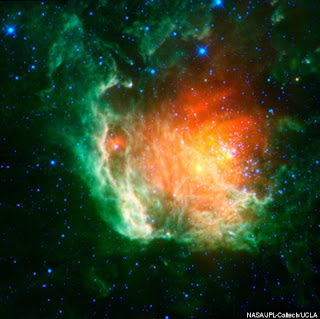
The Advanced Spaceborne Thermal Emission and Reflection Radiometer (ASTER) instrument on NASA's Terra spacecraft captured this nighttime image of the growing oil spill in the Gulf of Mexico on May 7, 2010. On April 20, an explosion destroyed the Deepwater Horizon oil platform operating in the Gulf 80 kilometers (50 miles) offshore, resulting in substantial loss of life and releasing 5,000 barrels of oil per day into the water. The huge oil slick was being carried towards the Mississippi River Delta, and small amounts of oil had reached the Louisiana, Alabama and Mississippi shores by May 3.

This thermal image from ASTER covers an area measuring 60 by 240 kilometers (37 by 147 miles), most of it over the Gulf of Mexico. The coldest surfaces appear dark, and the warmest appear white. The city of Pascagoula, Miss., is visible in the upper right corner; at night the land is colder (darker) than the Gulf waters. Offshore islands below Pascagoula also appear dark compared to the surrounding ocean. The black dots and patches over the Gulf waters are small clouds, particularly in the southern half of the image. The thickest parts of the oil spill appear as dark grey, filamentous masses in the southern part of the image, extending off the bottom. Other dark-light swirl patterns are water currents where different temperature water masses are visible.
No comments:
Post a Comment